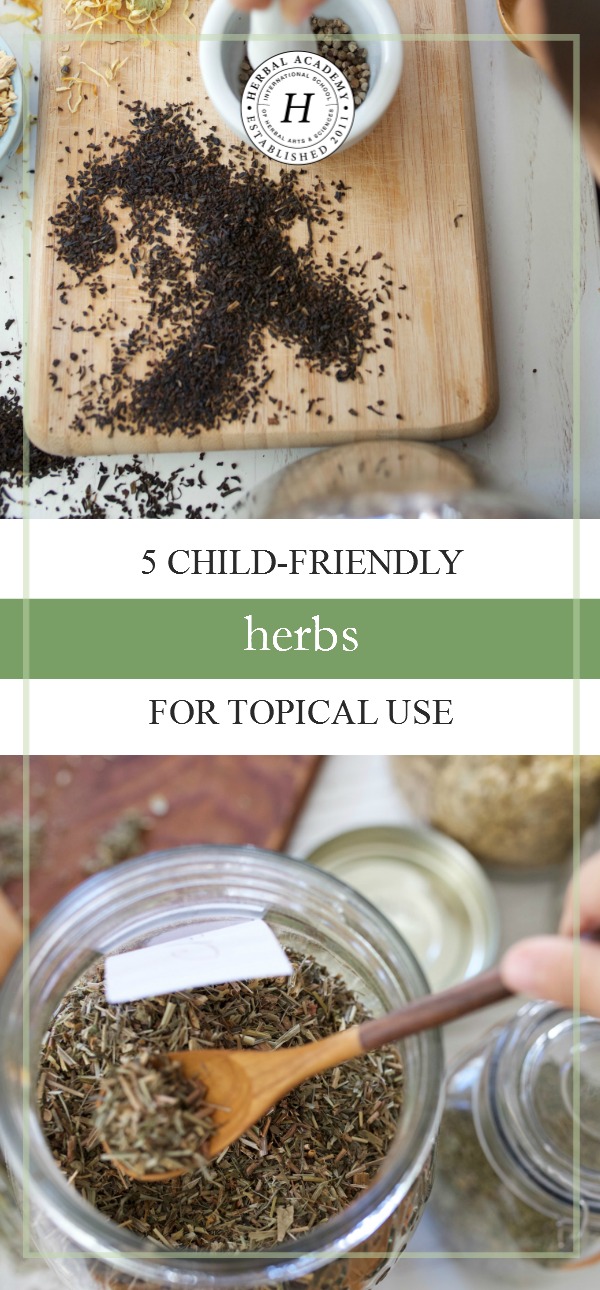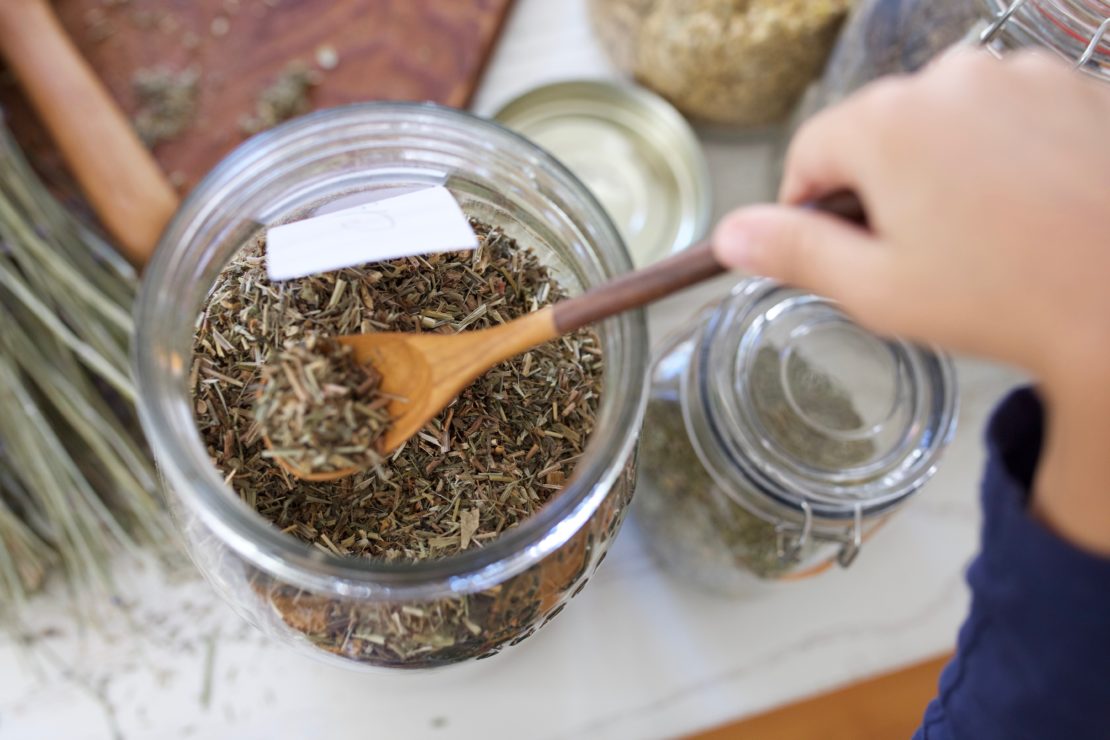
5 Child-Friendly Herbs For Topical Use
If you have children (or if you’ve ever been a child, for that matter), you’re familiar with all of the common childhood ailments, from colds and flu to basic boo-boos (like cuts, scrapes, and bruises). As a mother of two, there are a handful of herbs and very simple-to-make topical remedies that I like to keep on hand to address simple daily issues that arise. Let’s look at some of them in this post.
5 Child-Friendly Herbs For Topical Use
1. Calendula (Calendula officinalis)
Among other qualities, bright and sunny Calendula (Calendula officinalis) is a helpful children’s topical because of its anti-inflammatory, antimicrobial, and vulnerary (wound-healing) qualities. Both gentle and strong-acting, Calendula is one of my favorites because it can be used in so many child-friendly ways—as an infused oil, an infusion, a spray, in salves or powders, and on and on. It’s a turn-to remedy that supports everyday inflammatory skin disorders like diaper rash, cradle cap, eczema, and dermatitis and can also be helpful in situations as simple as heat rash. Calendula also aids in wound healing so it is a nice addition to wound washes; I’ve even added it to eye washes and poultices for children with conjunctivitis.
2. Plantain (Plantago major or minor)
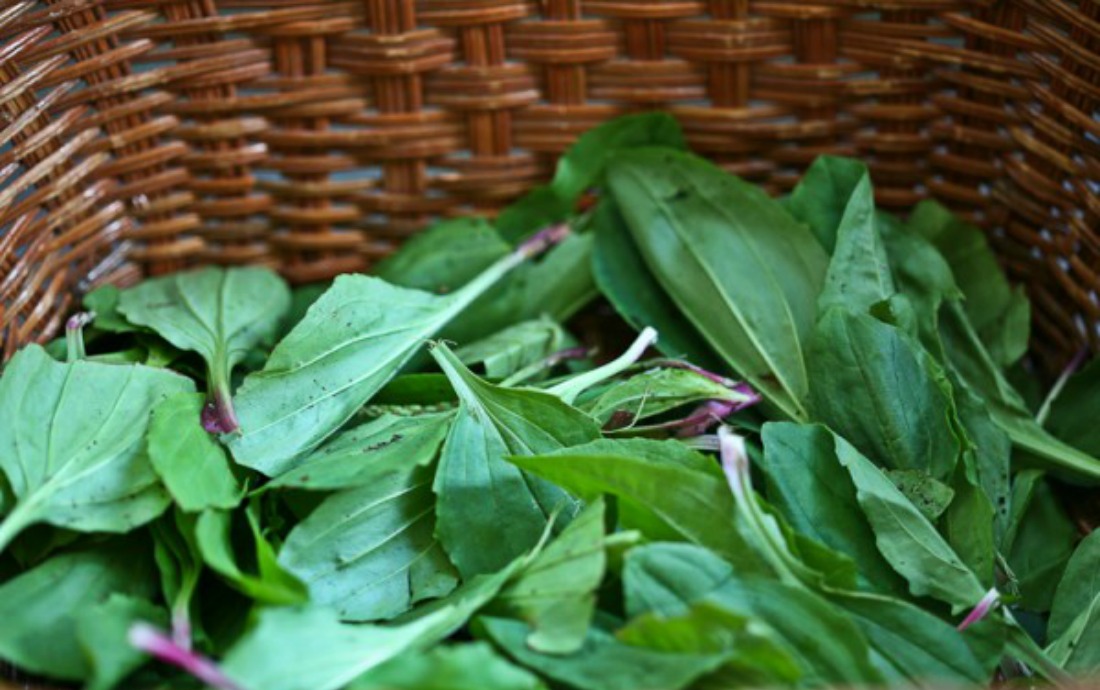
Plantain (Plantago major or minor) is the first plant I taught my older son to recognize and use. This was easy, because it was so abundant in our yard and also has come in handy for so many acute skin situations. When Kofi was around 10 and visiting his grandparents in Massachusetts, he was stung by wasps. I had him find the plantain in the yard and make a poultice to lay on the stings. When I called an hour later, he was happy and not in pain. Not only that, he had the sense of empowerment that comes with self-care using plants, even at a young age. Plantain is my number-one plant for bug bites and stings. Dried, it can be infused into oil, made into salve, or infused for a skin wash. Fresh, it is a simple but effective poultice that can be put right where it hurts.
3. Yarrow (Achillea millefolium)
If I could work with only one healing plant (okay, that would be a tough choice!), I might choose yarrow (Achillea millefolium). It’s bitter, so I can usually only get children to take small amounts of it as tea or tincture. I harvest it when it’s abundant, tincture and dry it, and keep it for all kinds of purposes. One of the easiest way to use yarrow with children is as a powder, a super-simple topical remedy for stopping bleeding in small or surface wounds. It’s also a key ingredient in a bath tea that I like to use with sniffly, feverish children (keep reading for the recipe!).
4. Lavender (Lavandula angustifolia)
Lavender (Lavandula angustifolia) is another one of those all-purpose herbs that has become an invaluable addition to my “mama apothecary.” When my children are overanxious, overactive, or can’t sleep, I dilute the essential oils with almond or sesame oil and massage their heads or feet to calm and soothe them. I also use it in the antibacterial spray that I use in my home and clean my son’s toys and lunchbox with it! The essential oil can also be used for sunburn. For more information on how to use essential oils safely, check out this post.
5. Honey
Finally, highly-antibacterial honey is useful in preparing children’s topical remedies. While it doesn’t mix well into a healing salve, it can be used on its own or as an herbal honey to dress skin infections or simple wounds. For example, a little honey applied to a surface scrape can protect and soothe the skin, encourage healthy immune activity, and discourage bacterial infection. This is great to have for toddlers learning to run and big kids learning to ride a bike. For teenagers, honey applied directly to the skin as a face mask can help obliterate the source of some acne breakouts and can also moisturize the skin.
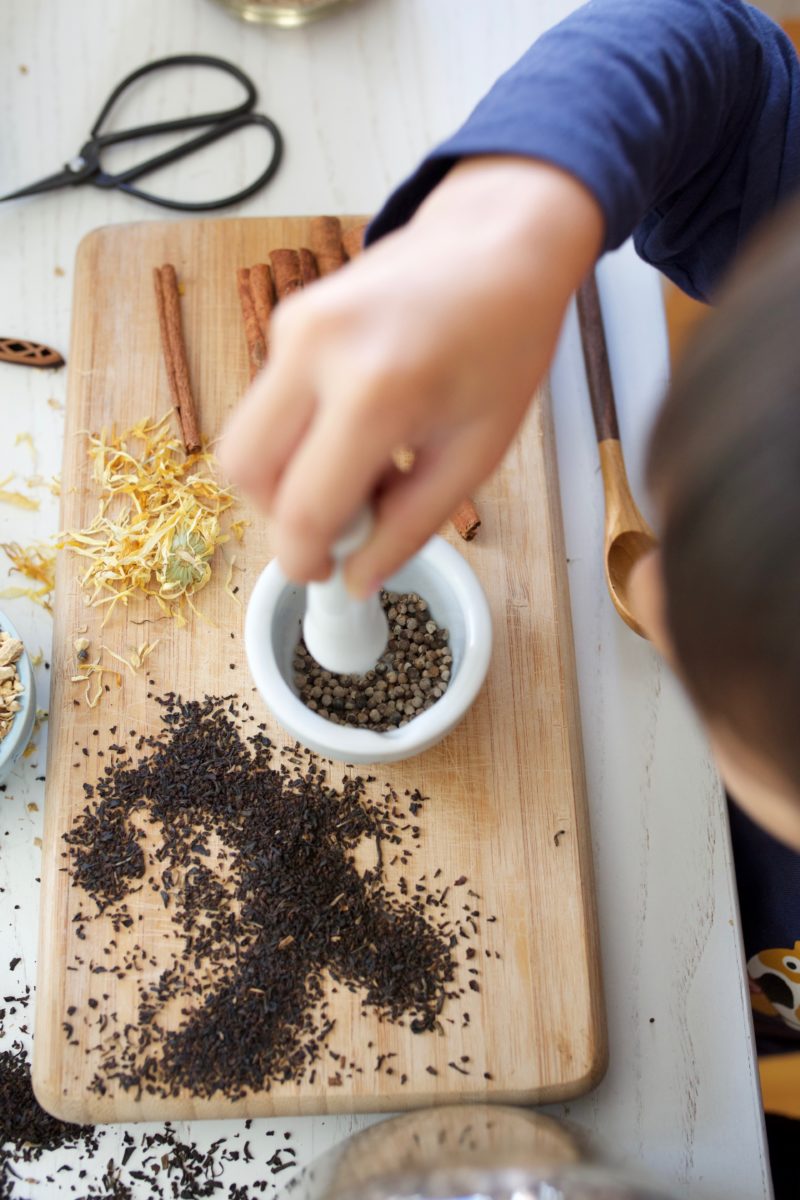
A Few Topical Remedies for Children
All-Purpose Calendula Salve
How have I not used this salve? To calm mosquito-bitten skin, to soothe and moisturize itchy patches of eczema, as a balm for cradle cap and dermatitis on the scalp, even a lip balm and moisturizer in the winter. So easy and helpful to have when there are children around!
All-purpose Calendula Salve
1-1 ½ cup Calendula-infused oil (apricot kernel, sesame, or almond are nice)
1 ounce beeswax pastilles or grated beeswax
10-15 drops essential oil, optional (lavender (Lavandula angustifolia), chamomile (Matricaria recutita), and rose geranium (Pelargonium roseum) are nice for children)
- Heat the infused herbal oil in a double boiler, or in a glass or Pyrex bowl over a pot of water (or in a double boiler, if you have one). If you’ve never made an infused oil, check out this how-to on the topic!
- Add the beeswax and stir until it completely dissolves.
- Stir in the essential oils.
- Carefully pour the mixture into tins or jars and allow to cool until solid.
(Helpful tip: The amount of beeswax you use relative to oil will determine how soft or firm your salve will be. Before pouring to jars, dip a spoon into the hot mix, then put in the refrigerator for a few minutes to test for consistency.)
Cold-Flu Bath Time Tea
This aromatic bath infusion soothes and supports little ones with colds or fever, and it’s perfect before a bedtime massage.
Cold-Flu Bath Time Tea
2 parts chamomile flower
2 parts Calendula flower
1 part yarrow leaf/flower
1 part linden leaf/flower
1 part peppermint leaf
- Mix all herbs together and store in a tightly-lidded jar out of direct sunlight.
- At bath time, place a cup or so of the herbal blend in a cheesecloth bag (or a muslin bag used for cheese making, if you can find one) and leave in the bathtub while filling it with hot water.
- Be sure to let the bath cool to an appropriate temperature and remove the bag of herbs before bathing.
Lavender-Thyme Antiseptic Spray
This simple mixture in a spray bottle has come to our rescue so many times, either to clean filthy skin, wash a cut, or help super-busy kiddos to chill out before bed. I even use it to clean toys, blocks or other hard objects
Lavender-Thyme Antiseptic Spray
3/4 cup lavender flower infusion
3/4 cup thyme leaf infusion
1 tablespoon thyme or lavender tincture (as a preservative)
Mix ingredients together well in a spray bottle and shake well before using.
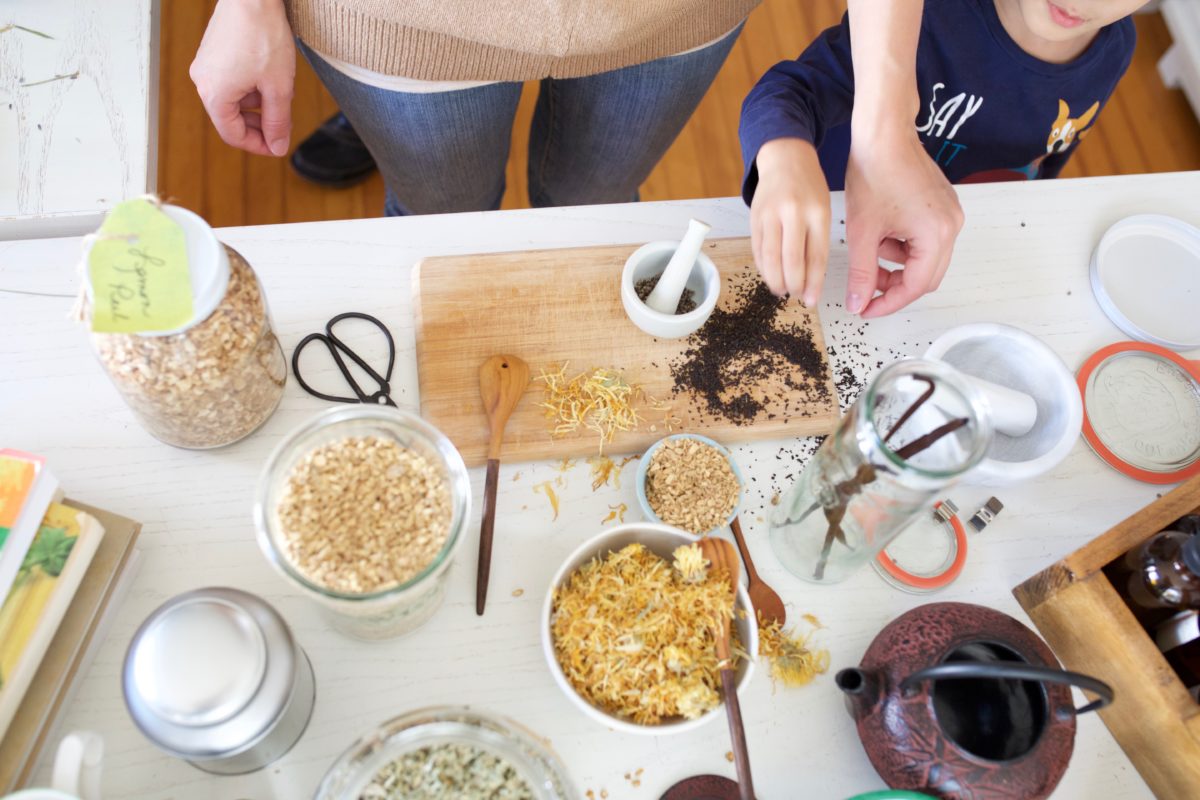
Herbs As Teachers
The five herbs in this post are ones that are distinctive and easy to recognize, and there’s a reason for that. Something I love about working with children and herbs is that there are certain herbs that are abundant (depending on your location), easy to recognize, and safe for children. This makes them not only allies to support health, but also great teaching tools.
Even very young children can recognize the bright bloom of Calendula, see the difference between wide- and narrow-leaf plantain, or know the scent of lavender. As you create herbal preparations with and for children, think of ways to involve them in the process of learning from the herbs while their health and well-being is supported by them!
